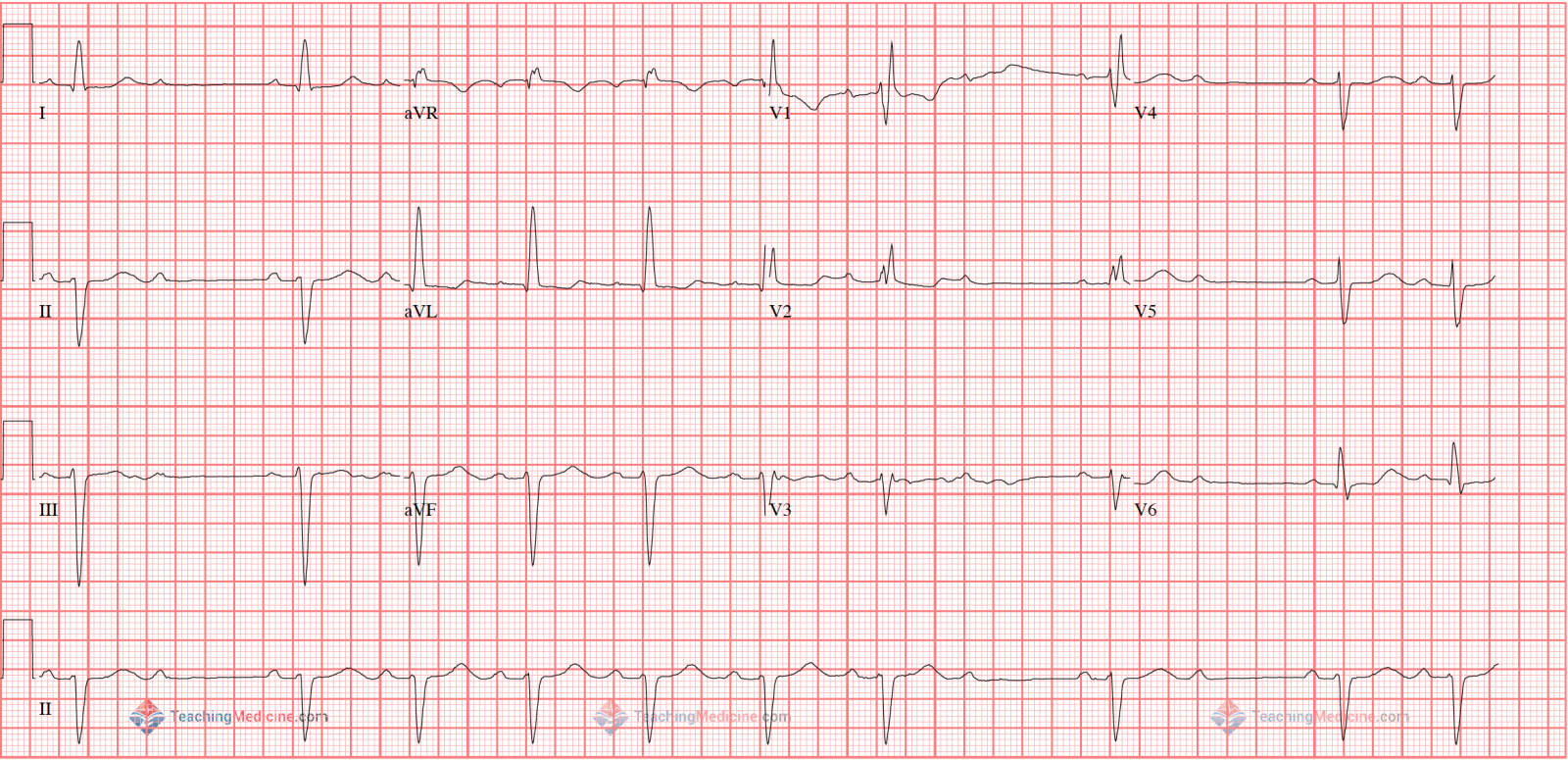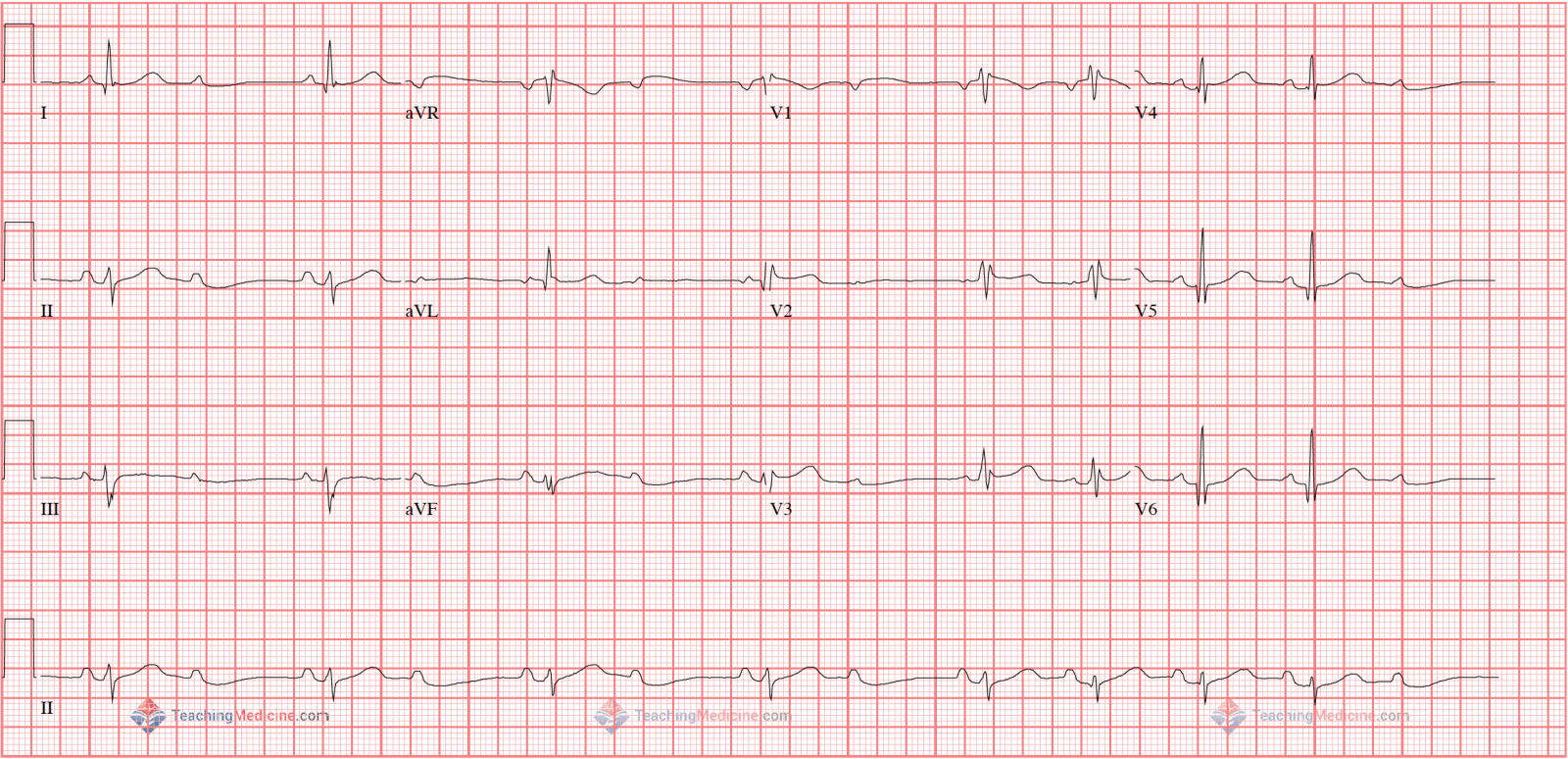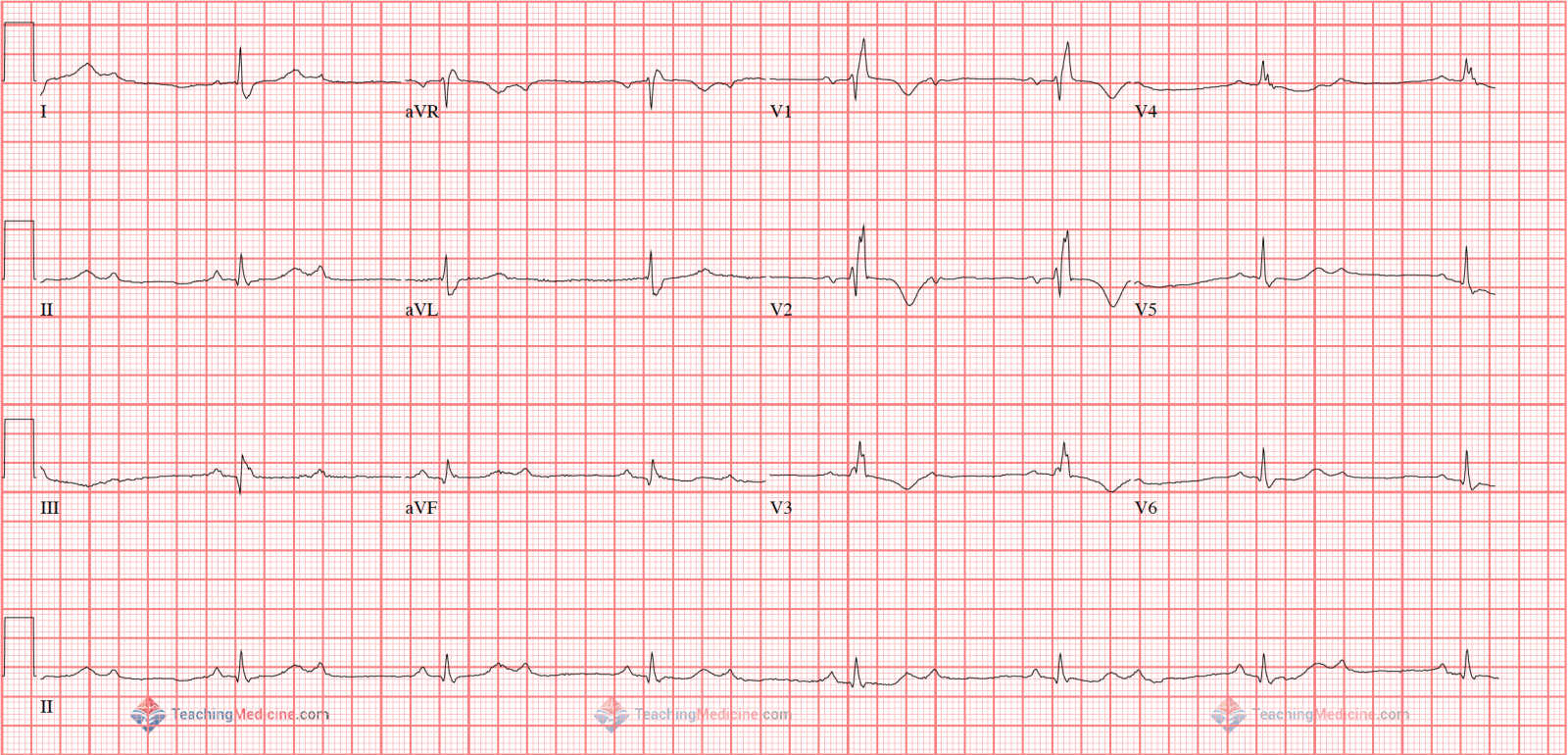Second degree Heart Block Mobitz Type 2 Diagnostic criteria: (boldfaced with * indicates an important feature)- Rate: any
- * Rhythm: regular with occasional missing beats
- P waves: all normal
- PR interval: constant
- QRS: narrow
ElectrophysiologySome but not all the P waves are conducted in second degree heart block. In contrast, in first degree heart block, all the P waves are conducted
down to the ventricles and in third degree heart block, none of the P waves are conducted.
There are a few names for this heart block. They include:- AV block second degree type 2
- Mobitz type 2
The difference between Type 1 and Type 2 second degree heart block:- Type 1 has increasing PR intervals, increasing until the QRS is "dropped" or missing
- Type 2 has constant PR intervals, with randomly dropped QRS complexes
Second degree type 2 heart blocks usually occur BELOW the AV node
1:
- 20% are in the Bundle of His
- 80% are in the bundle branches (note that both branches would need to be blocked at same time)
Clinical Significance:Some of the conduction from the atria to the ventricles is blocked. Therefore, the ventricular rate will be lower than the atrial rate. If the atrial rate is already borderline low, then the loss of a few conducted beats could result in a ventricular rate that is "too low" and causes symptoms. If this occurs, and the ventricular rate is low enough to cause symptoms, then a pacemaker might be required.
Second degree type 2 heart block is a permanent condition and can
sometimes progress to a worse (third degree) form of heart block. This is an important contrast to second degree type 1 which is usually temporary and rarely progresses. Type 2 blocks are therefore more dangerous and if they convert to a third degree block, the patient will have a high probability of having a very low heart rate and be symptomatic from this. If this does happen, then the patient would have a high probability of needing a pacemaker.
Some medications can cause heart block (or make it worse). Beta blockers, calcium channel blockers, or any other medications that inhibit the AV node should be reduced in dose or discontinued if this is safe to do.
Causes of Second degree Type 2 heart block:- ischemia (the AV node branch of the right coronary artery supplies the AV node)
- fibrosis in the conducting system
- heart surgery
- others
Examples:

This example below has what is called 2:1 block. Every other P wave is blocked. Therefore, it is impossible to determine if the PR interval is increasing or not and therefore impossible to say for sure if it is a type 1 or type 2 block.

References:
1)
Narula OS. Conduction disorders in the AV transmission system. In: Cardiac Arrhythmias, Dreifus L, Likoff W (Eds), Grune and Stratton, New York 1973. p.259.